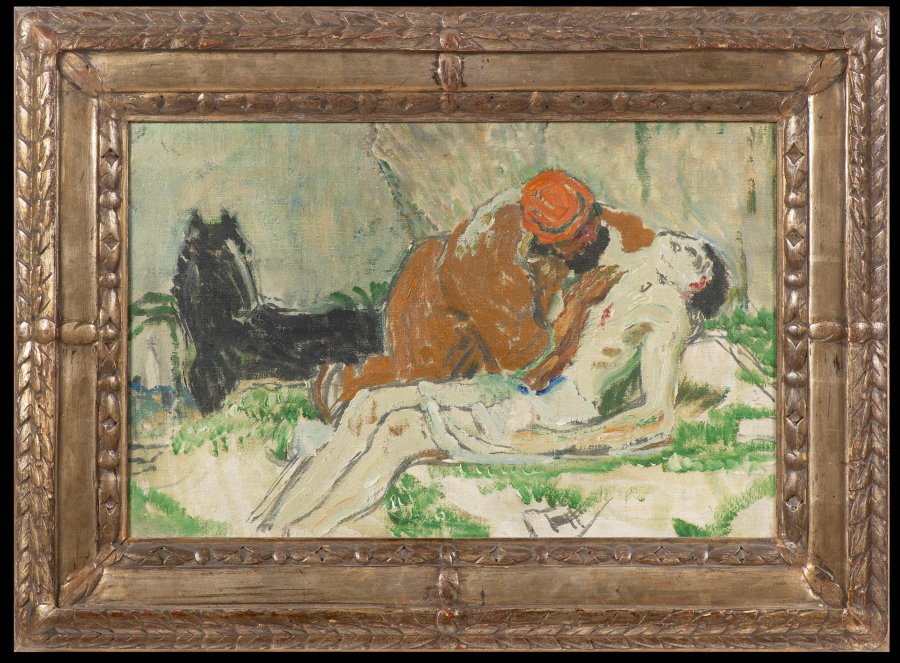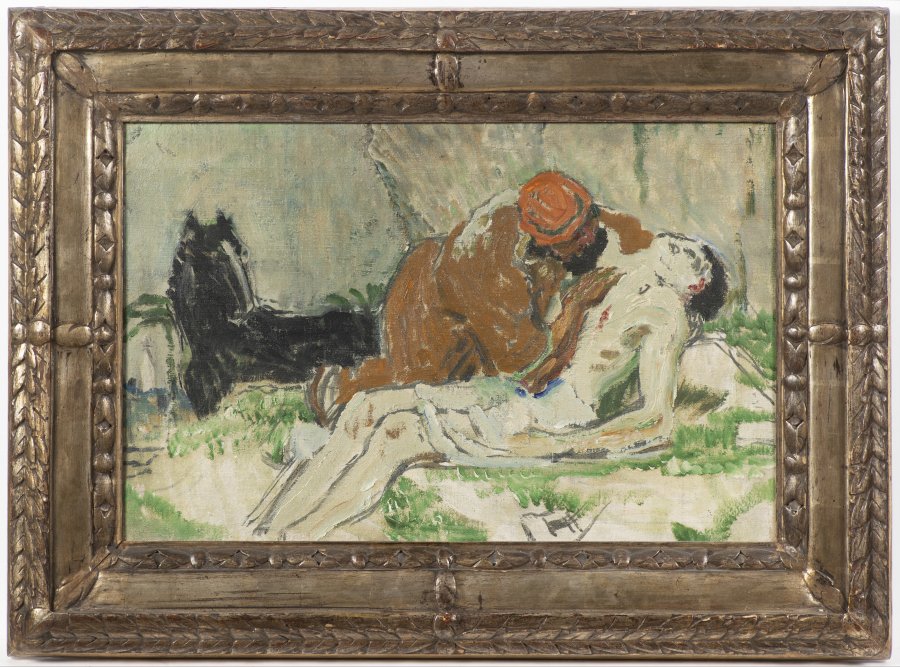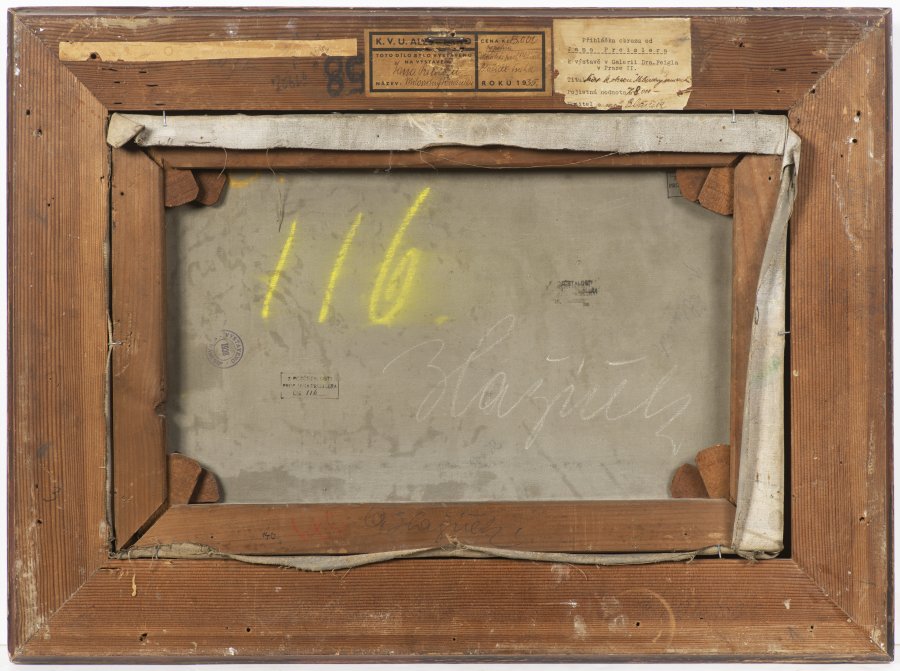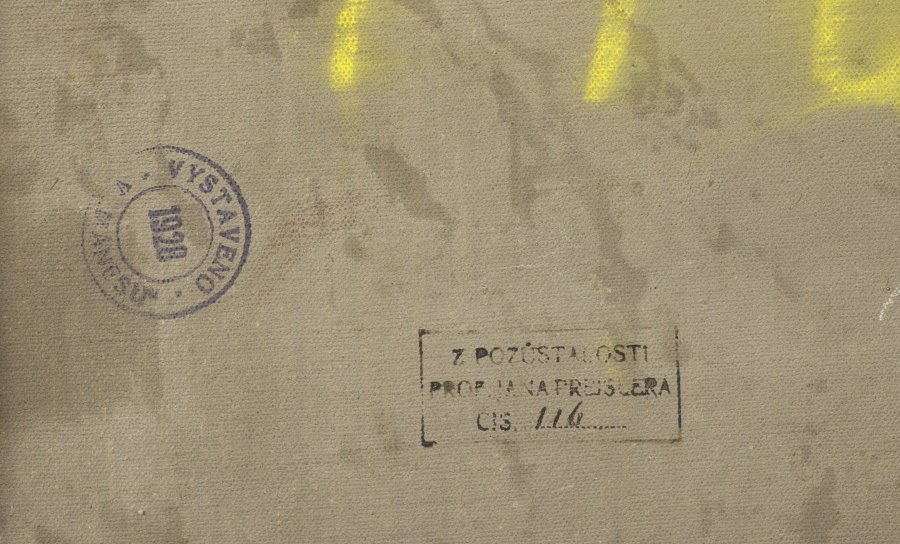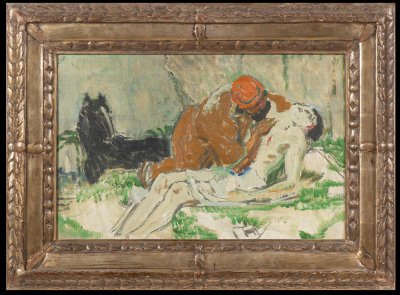3 800 000 CZK
| 149 020 €
Oil on canvas.
Stamps on reverse: Estate of Jan Preisler; exhibited at the Manes in 1928; collection of Oldrich Blazicek.
Labels: Club of Fine Artists exhibition in 1935, insured value 8000 Czechoslovak koruna; submitted for the Galerie Hugo Feigl exhibition in Prague II.
The painting, which originally was part of Preisler’s estate and was exhibited several times, is an excellent example of the painter’s spontaneous, yet stylish expression. As explained in the expert assessment by Prof. PhDr. Petr Wittlich, CSc: “It captured the attention of Antonin Matejcek, the author of Preisler’s main monograph in 1950, which dated it to 1913–1914 and understood it as a ‘fascinating allegory of suffering and love’ and as an expression of Preisler’s inner restlessness, as a response to his fatigue from the strict methodical and classical style the painter imposed on himself in 1909–1912. Newer literature, however, interprets the painting in the specific context of his work: as a personal response to an eponymous painting by Emil Filla, which sparked debate when it was exhibited at the Manes association’s spring exhibition in 1911. Preisler was actively interested in the activities of the younger generation in the Osma art group, and he advocated for their acceptance to Mánes. The theory that his Good Samaritan is a response to Filla is highly likely also given that such a dramatic theme is rare in Preisler’s oeuvre. A comparison of the two paintings excellently demonstrates how differing artistic opinions are expressed in a competition of ideas. Although Preisler’s painting is also highly expressive, which is seen in the style and execution, it is composed with the experience he gained from earlier decorative work. This merger of expression and mature composition gives shape to the special value of Preisler’s expression compared to Filla’s “Baroque” violence. In terms of color, Preisler’s painting is more of a sketch allowing the white support to show through, which helps to unify the image. The use of black color is an interesting detail. In Preisler’s Black Lake period, black possessed important contextual and artistic meaning. The black horse here is important as an expressive element of color, adding a demonic note to the dramatic scene. The browns and reds of the Samaritan, the colors of life, are surrounded by the blackness of the horse and whiteness of the dying man; Preisler’s ingenious sense of color is displayed in this contrasting, yet harmonious composition of colors. The Good Samaritan is a Preisler painting that testifies to his artistic mastery and his artistic potential, which classified Preisler as a founder of Czech modern painting.”
Ref.: Jan Preisler (1910–1914); Petr Wittlich, Lenka Bydzovská, Karel Srp, Polana Bregantová; Municipal House 2003 – p. 301, fig. 313. Jan Preisler – kresby; Petr Wittlich; Odeon Praha 1988 – Nácrt k Milosrdnému Samaritánovi (1910–14), p. 61, list of images fig. 18. The Good Samaritan in Works of Czech artists in the First Half of the 20th Century; Bachelor’s thesis, Eliska Pechácková (Catholic Theological Faculty, 2007).

